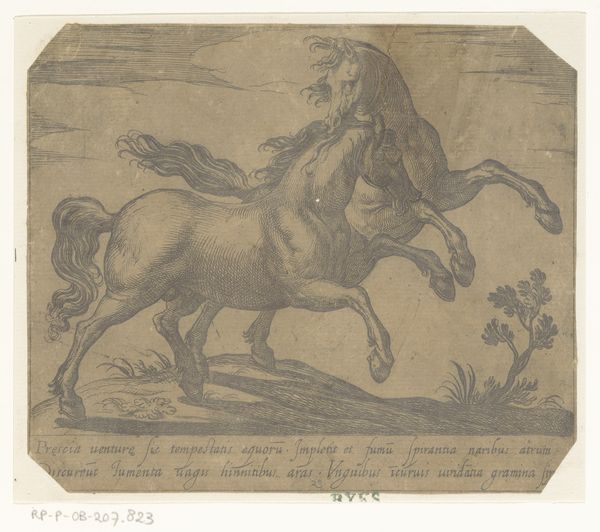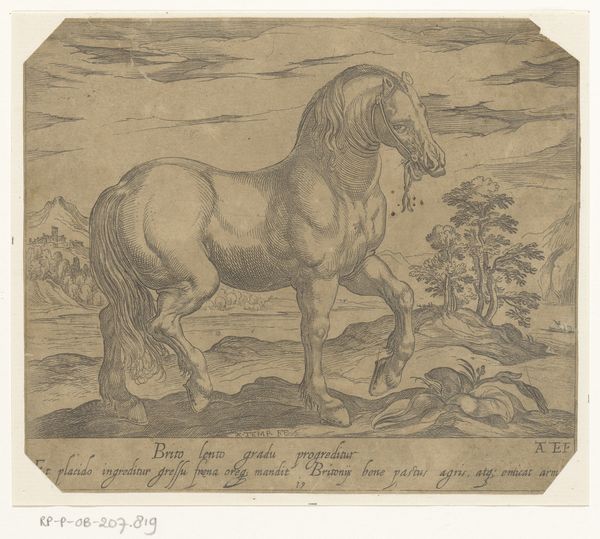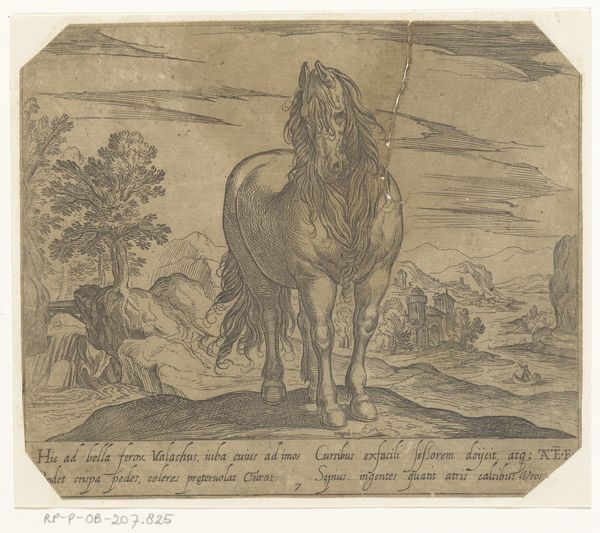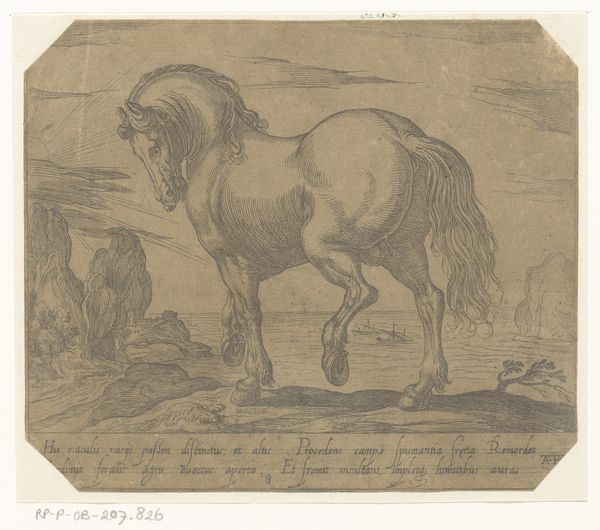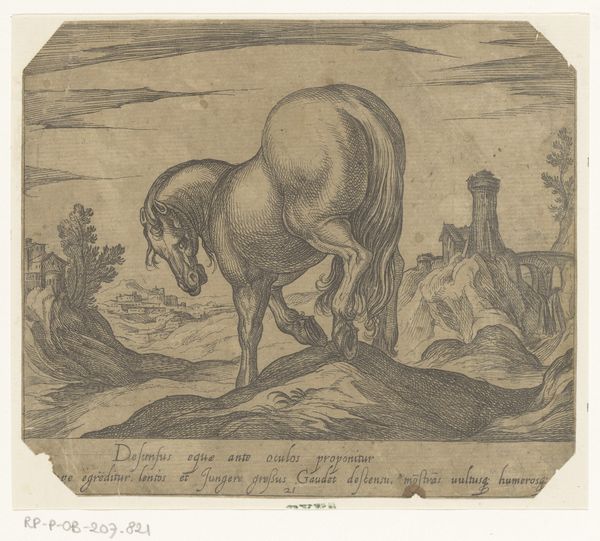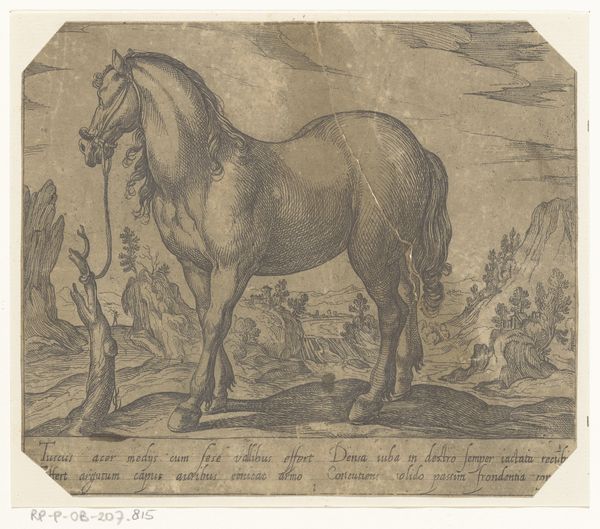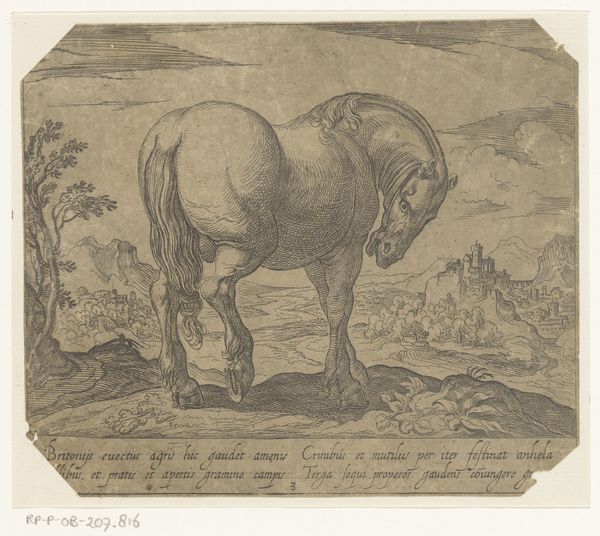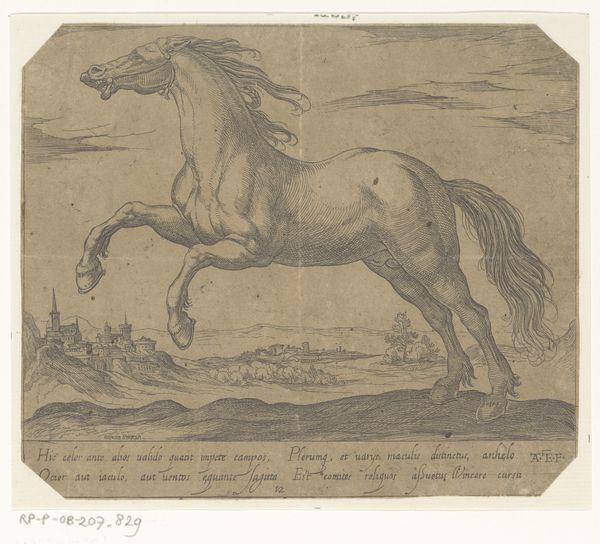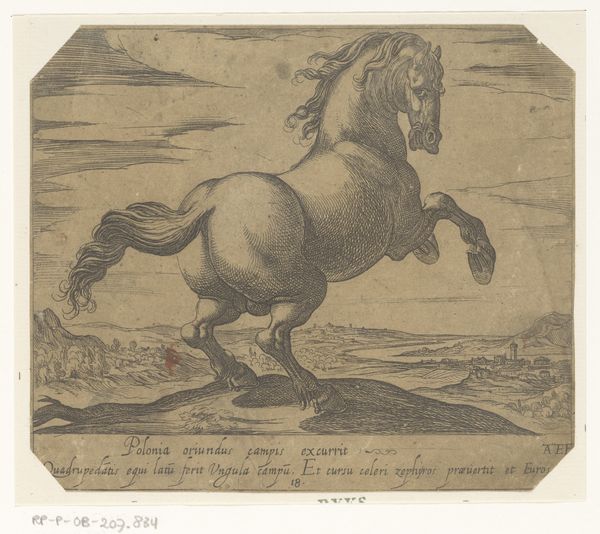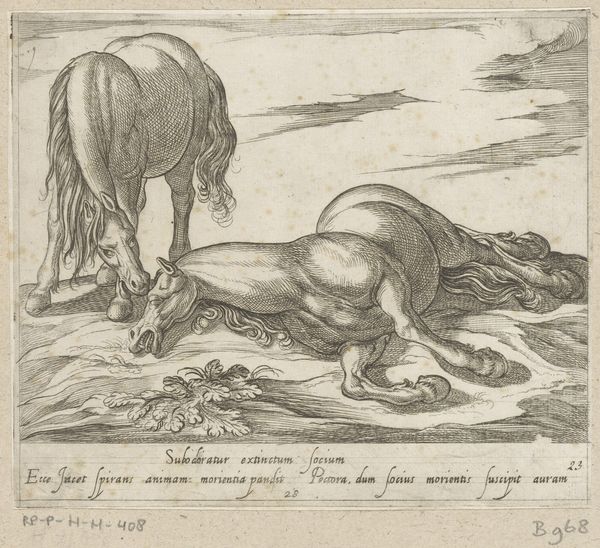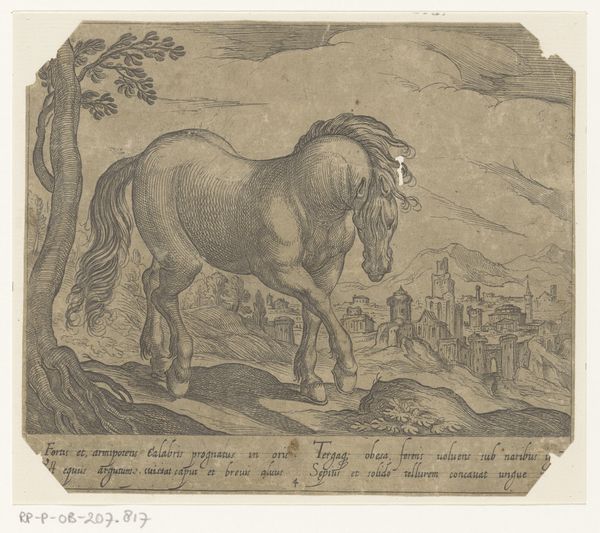
print, engraving
#
animal
# print
#
landscape
#
classical-realism
#
figuration
#
line
#
history-painting
#
academic-art
#
engraving
Dimensions: height 141 mm, width 165 mm
Copyright: Rijks Museum: Open Domain
Antonio Tempesta created this engraving, "Staand paard van achteren gezien," sometime between 1576 and 1630. During the late Renaissance, the horse was not merely an animal; it symbolized power, status, and virility within the aristocratic echelons of European society. Here, Tempesta seems to play with the traditional representation. We are offered a view from behind, complicating the power dynamic, almost as if to subvert the male gaze. The horse is poised and muscular, yet there's also a sense of vulnerability, as its hindquarters are exposed. The Latin inscription at the bottom adds another layer, hinting at the horse's strength and spirit. This work prompts a consideration of the intersections between power, masculinity, and the natural world. While it celebrates the animal's physical prowess, it also invites us to reflect on the cultural values we project onto these magnificent creatures and, by extension, onto ourselves.
Comments
No comments
Be the first to comment and join the conversation on the ultimate creative platform.

